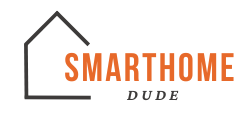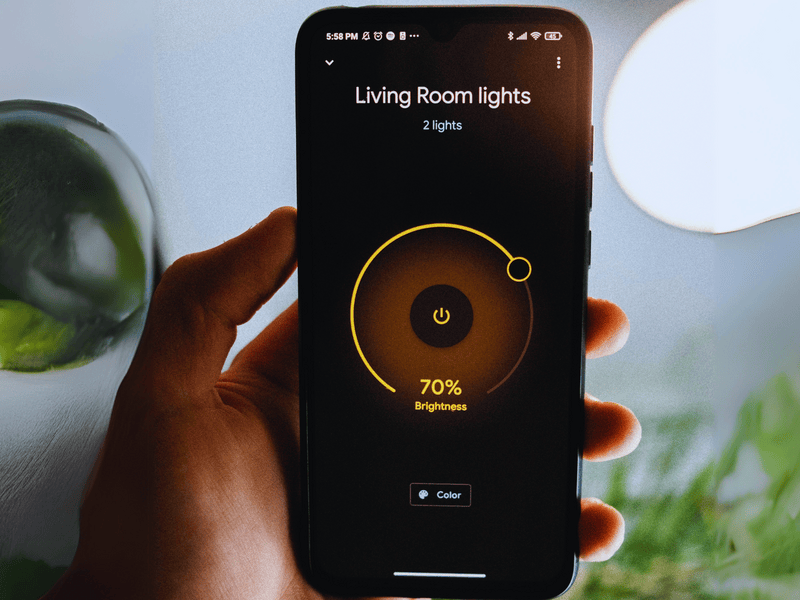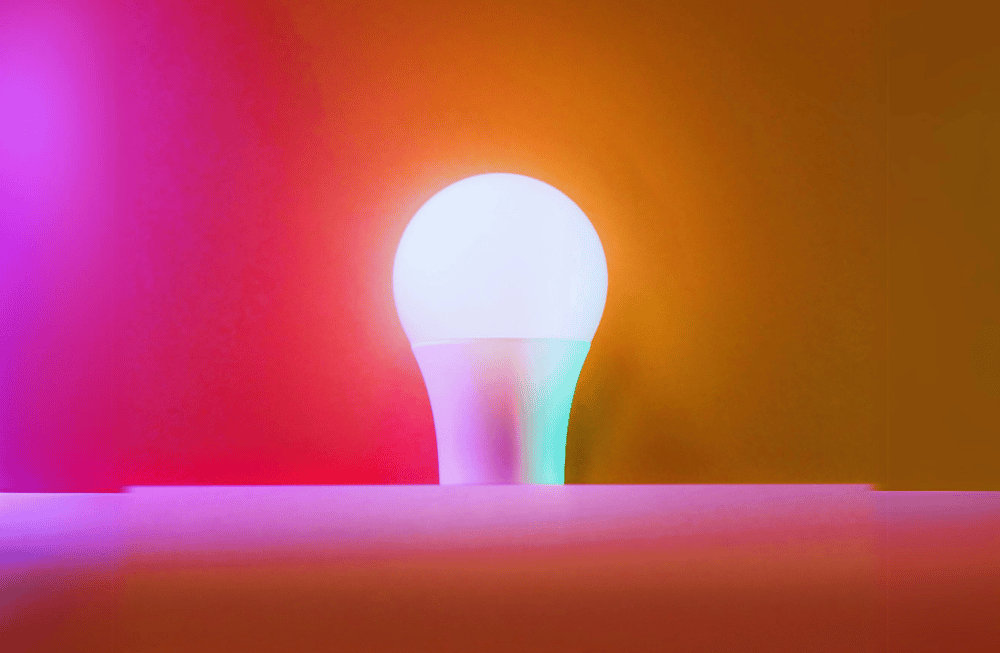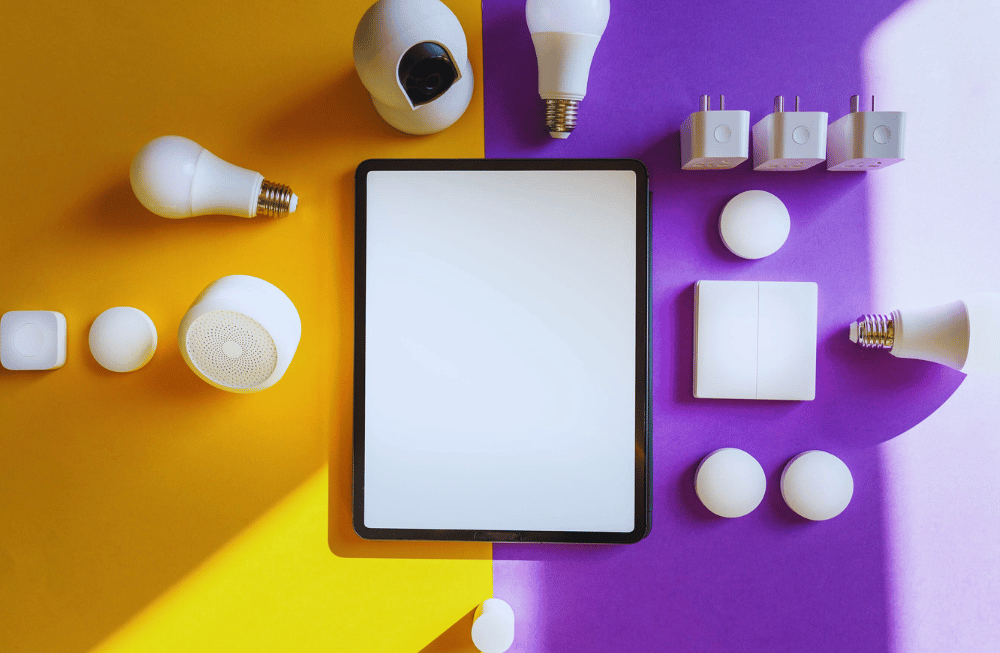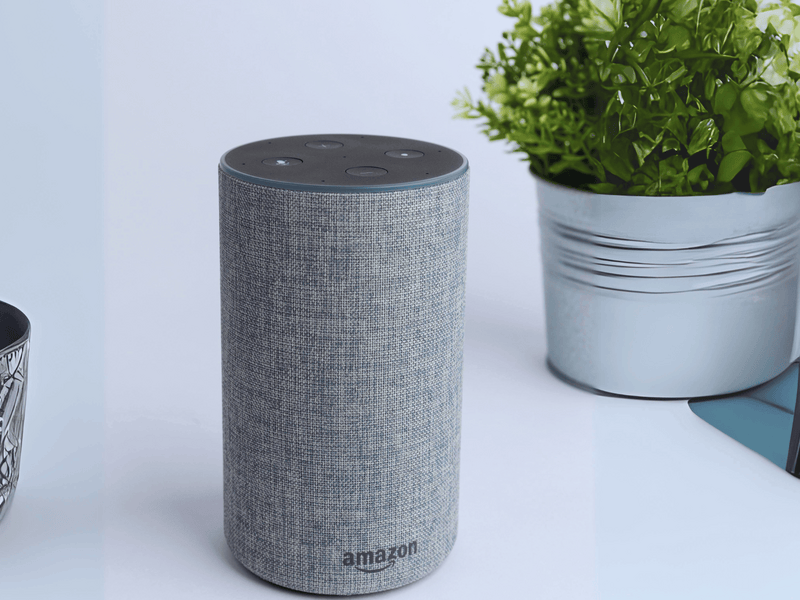In today’s world, where technology is advancing at an unprecedented pace, it’s no surprise that our homes are getting smarter too. From voice-activated assistants to automated security systems, smart home devices have revolutionized the way we live. One such innovation that has transformed our homes is smart lighting. With the ability to control your lights remotely using a smartphone app or voice commands, smart lighting adds convenience, efficiency, and a touch of elegance to your living space. In this comprehensive guide, we will explore the world of smart lighting, discuss the pros and cons of different options, and help you choose the best smart lighting solution for your home.
Understanding Smart Lighting
Smart lighting refers to the integration of wireless technology into traditional lighting systems, allowing users to control their lights remotely using a smartphone, voice commands, or programmable switches. These intelligent lighting systems offer a wide range of features and benefits that go beyond just the ability to turn your lights on and off. With smart lighting, you can create customized lighting scenes, adjust the brightness and color temperature of your lights, set timers and schedules, and even sync your lights with other smart devices in your home. The possibilities are endless.
Benefits of Smart Lighting
The benefits of smart lighting are numerous and can greatly enhance your smart home experience. Here are a few key advantages:
Convenience: With smart lighting, you can control your lights from anywhere, whether you’re at home or away. Forgot to turn off a light before leaving the house? No problem. Simply open the app on your smartphone and switch it off remotely. Smart lighting also offers the convenience of voice control, allowing you to control your lights with simple voice commands.
Energy efficiency: Smart lighting systems use energy-efficient LED bulbs, which consume less energy compared to traditional incandescent bulbs. Additionally, the ability to schedule your lights and set timers ensures that you only use them when needed, further reducing energy consumption and lowering your electricity bills.
Customization: One of the most exciting aspects of smart lighting is the ability to create customized lighting scenes to suit your mood and activities. Whether you want a bright, energizing light for work or a soft, warm glow for relaxation, smart lighting allows you to adjust the brightness and color temperature of your lights to create the perfect ambiance.
Security: Smart lighting can enhance the security of your home by creating the illusion of occupancy when you’re away. With the ability to schedule your lights to turn on and off at specific times, you can deter potential intruders and make it appear as if someone is home, even when you’re not.
Smart Bulbs vs. Smart Switches: Making the Right Choice
When it comes to smart lighting, you have two main options to choose from: smart bulbs and smart switches. Each option has its own advantages and considerations, so let’s take a closer look at each to help you make an informed decision.
Smart Bulbs
Smart bulbs are individual light bulbs that can be controlled wirelessly using a smartphone app or voice commands. These bulbs are typically LED-based and come in a variety of options, including white bulbs, color-changing bulbs, and tunable white bulbs. Here are some key points to consider when it comes to smart bulbs:
Installation: Installing smart bulbs is as easy as replacing your traditional bulbs with the smart versions. Simply screw in the smart bulb, connect it to your home’s Wi-Fi network, and you’re ready to go.
Flexibility: Smart bulbs offer the advantage of individual control, allowing you to adjust the brightness, color, and temperature of each bulb independently. This level of control is ideal for rooms where you want to create different lighting scenes, such as the living room or bedroom.
Compatibility: Smart bulbs work well with lamps, small fixtures, and other decorative lighting. They are also a great option for multi-bulb fixtures, as you can control each bulb individually.
Limitations: The primary limitation of smart bulbs is that they are reliant on the physical light switch. If someone turns off the switch, the smart bulb loses power and becomes unresponsive until the switch is turned back on. This can be mitigated by using smart switches or by placing a cover over the switch to prevent accidental toggling.
Smart Switches
Smart switches, on the other hand, replace your existing light switches and provide smart control over your entire lighting circuit. With smart switches, you can control multiple lights simultaneously and retain the functionality of your physical switches. Here are some key points to consider when it comes to smart switches:
Installation: Installing smart switches requires a bit more effort compared to smart bulbs, as it involves replacing your existing switches and wiring the new smart switches into your electrical system. If you’re comfortable with basic electrical work, installation should be relatively straightforward. However, if you’re unsure, it’s best to consult a licensed electrician.
Compatibility: Smart switches work with any type of light bulb, including incandescent, LED, and CFL bulbs. This makes them a versatile option for any room in your home.
Convenience: Smart switches provide a familiar and intuitive way to control your lights. You can use the physical switch, as well as the smartphone app or voice commands, to turn your lights on and off. This can be particularly useful if you have family members or guests who may not be familiar with using smartphone apps or voice commands.
Limitations: One limitation of smart switches is that they can only control the lights in a specific circuit. If you have multiple circuits in a room, you will need to install multiple smart switches to control all the lights. Additionally, smart switches may not be compatible with certain types of lighting fixtures, such as those with built-in dimmers or low-voltage lighting systems.
Best Smart Lighting Systems for Your Smart Home
Now that you have a better understanding of smart bulbs and smart switches, let’s explore some of the best smart lighting systems available on the market today. These systems offer a range of features, compatibility options, and price points, ensuring that there’s something for everyone.
Philips Hue
Philips Hue is widely regarded as one of the best smart lighting systems on the market. With a wide range of products, including bulbs, light strips, and accessories, Philips Hue offers unparalleled flexibility and control over your lighting. Here are some key features of Philips Hue:
Compatibility: Philips Hue works with major smart home platforms, including Amazon Alexa, Google Assistant, and Apple HomeKit. This ensures seamless integration with your existing smart home devices.
Customization: With Philips Hue, you can create personalized lighting scenes, adjust the color and brightness of your lights, and even sync your lights with music, movies, and games for a truly immersive experience.
Easy Setup: Setting up Philips Hue is a breeze. Simply screw in the smart bulbs, connect the Hue Bridge to your Wi-Fi router, and follow the instructions in the app to complete the setup process.
Expandability: Philips Hue offers a wide range of products, allowing you to expand your smart lighting system as your needs evolve. From individual bulbs to light strips and outdoor lighting, there’s a Philips Hue product for every corner of your home.
Lutron Caseta Wireless
Lutron Caseta Wireless is another top contender in the smart lighting market. Known for its reliability and ease of use, Lutron Caseta Wireless offers a range of products that can seamlessly integrate with your existing lighting fixtures. Here are some key features of Lutron Caseta Wireless:
Compatibility: Lutron Caseta Wireless is compatible with major smart home platforms, including Amazon Alexa, Google Assistant, Apple HomeKit, and more. This allows for easy integration with your smart home ecosystem.
Wireless Control: With Lutron Caseta Wireless, you can control your lights wirelessly using the smartphone app, Pico remote, or voice commands. The system also offers geofencing capabilities, allowing your lights to automatically turn on or off based on your location.
Dimming Functionality: Lutron Caseta Wireless offers smooth, flicker-free dimming for a more comfortable and customizable lighting experience. You can easily adjust the brightness of your lights to create the perfect ambiance for any occasion.
Easy Installation: Lutron Caseta Wireless is designed for easy installation, with step-by-step instructions and video tutorials to guide you through the process. The system is also compatible with existing wiring, making it a great option for both new and existing homes.
Nanoleaf
If you’re looking for something a bit more unique and artistic, Nanoleaf offers innovative smart lighting solutions that double as decorative pieces. The Nanoleaf lighting panels are modular, allowing you to create custom shapes and designs on your walls. Here are some key features of Nanoleaf:
Customizable Designs: With Nanoleaf, you can create stunning lighting designs on your walls, ceilings, or even furniture. The modular panels can be arranged in any pattern or shape, adding a touch of creativity to your living space.
App Control: Nanoleaf’s smartphone app allows you to control the brightness, color, and effects of your lighting panels. You can choose from a wide range of pre-programmed scenes or create your own custom scenes to suit your mood and style.
Voice Control: Nanoleaf works with major voice assistants, including Amazon Alexa, Google Assistant, and Apple Siri. This allows for convenient hands-free control of your lighting panels using simple voice commands.
Music Sync: Nanoleaf panels can sync with your music, creating a dynamic light show that matches the rhythm and beat of your favorite songs. This adds an extra layer of immersion and entertainment to your home.
Integrating Smart Lighting into Your Smart Home
Now that you’ve chosen the best smart lighting system for your home, it’s time to integrate it into your existing smart home ecosystem. Here are some steps to help you get started:
Set up your smart lighting system: Follow the manufacturer’s instructions to set up your smart lighting system. This usually involves connecting the smart bulbs or switches to your Wi-Fi network and configuring them using the accompanying smartphone app.
Connect to your smart home platform: Most smart lighting systems are compatible with popular smart home platforms, such as Amazon Alexa, Google Assistant, Apple HomeKit, and Samsung SmartThings. Follow the instructions provided by the manufacturer to connect your smart lighting system to your preferred smart home platform.
Create lighting scenes and routines: Take advantage of the customization options offered by your smart lighting system to create lighting scenes and routines that suit your lifestyle. For example, you can create a “movie night” scene that dims the lights and sets a warm, cozy ambiance, or a “wake-up” routine that gradually increases the brightness of your lights in the morning.
Explore automation options: Smart lighting systems often offer automation features that allow your lights to respond to specific triggers or events. For example, you can set your lights to turn on automatically when you enter a room or dim them when you start watching a movie. Experiment with different automation options to find what works best for you.
Expand your smart home ecosystem: Once you’ve successfully integrated your smart lighting system, consider adding other smart home devices to enhance your smart home experience. From smart thermostats to security cameras, there are countless options to choose from. Make sure to check compatibility and consider how these devices can work together to create a truly connected home.
Conclusion
Smart lighting is a game-changer when it comes to enhancing your smart home experience. With the ability to control your lights remotely, create customized lighting scenes, and sync your lights with other smart devices, smart lighting offers convenience, energy efficiency, and endless possibilities for customization. Whether you choose smart bulbs or smart switches, there are plenty of options available to suit your needs and preferences. By integrating your smart lighting system into your smart home ecosystem, you can create a truly connected and automated living space that is as functional as it is beautiful. So why wait? Take the first step towards a brighter and smarter home by exploring the world of smart lighting today.
